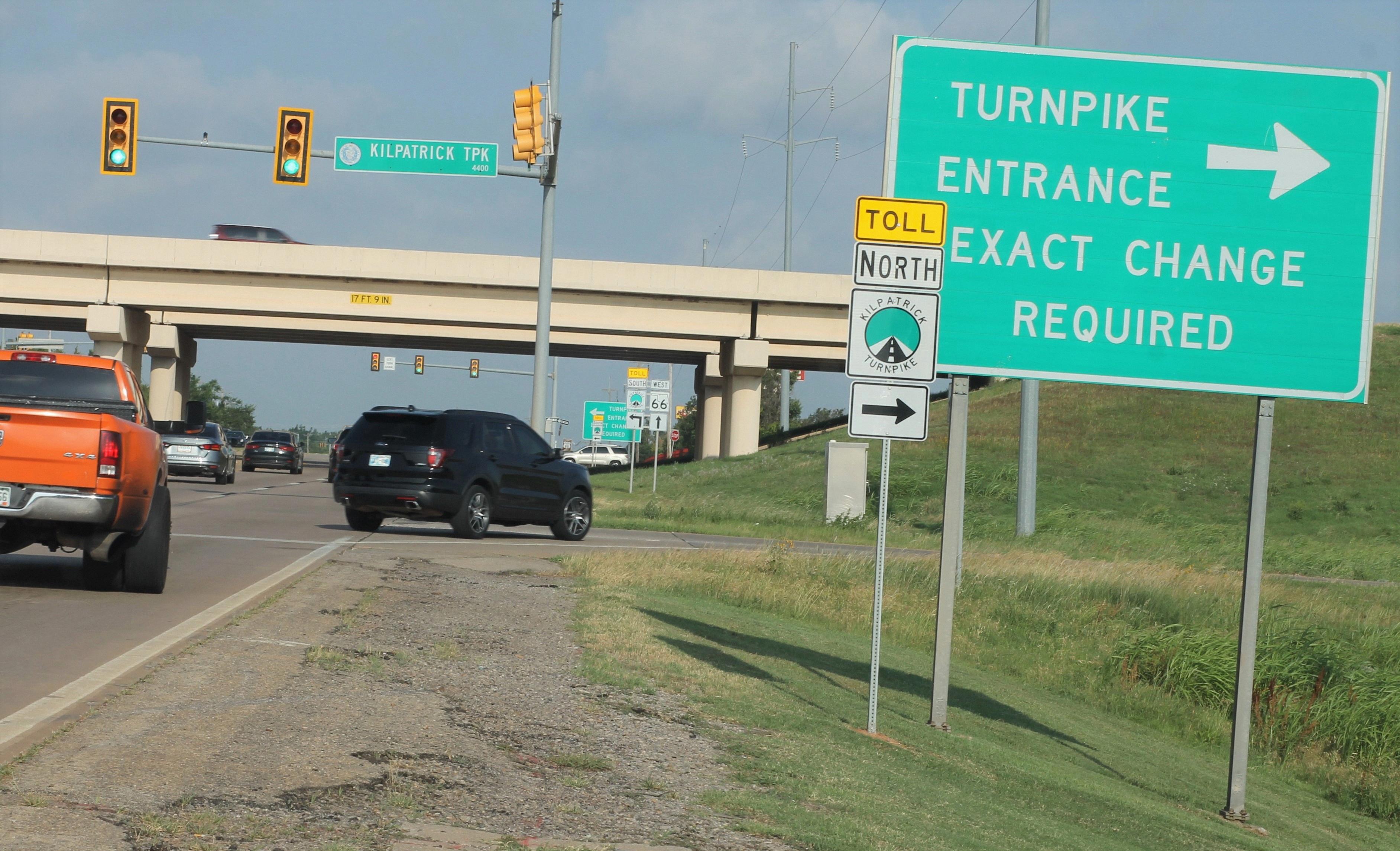Turnpikes, also known as toll roads, played a significant role in the history of transportation in the United States. These early roads were named turnpikes because they featured a pike or pole that blocked passage until a toll fee was paid. Once the toll was paid, the pike would be turned parallel to the road, allowing the traveler to proceed.
Turnpikes were operated by private business corporations that took on the responsibility of building and maintaining the roads. In return, they were granted the right to collect fees from travelers. These toll fees were used to fund the construction and maintenance of the roads, making them self-sustaining enterprises.
During the nineteenth-century transportation revolution, turnpikes were often overshadowed by more advanced modes of transportation such as canals and railroads. However, their significance should not be overlooked. Turnpikes were instrumental in improving transportation infrastructure and facilitating trade and commerce.
The construction of turnpikes helped to connect different regions and towns, making travel more efficient and reliable. Prior to the existence of turnpikes, roads were often poorly maintained and difficult to navigate. Turnpikes, on the other hand, were built with better quality materials and were regularly maintained, ensuring smoother journeys for travelers.
One notable feature of turnpikes was the toll houses or toll booths located along the roads. These structures served as collection points for toll fees. Travelers would stop at these toll houses, pay the designated toll amount, and then continue on their journey. The toll fees varied depending on factors such as the distance traveled or the type of vehicle used.
The revenue generated from toll fees was crucial for the maintenance and improvement of turnpikes. The funds were used to repair road surfaces, build bridges, and enhance safety features such as signage and lighting. This continuous investment in turnpikes helped to create safer and more efficient travel routes.
Although turnpikes were essential for the development of transportation infrastructure, they were not without criticism. Some travelers resented the need to pay toll fees, considering them a burden on their journeys. Additionally, the toll system was not always efficient, leading to delays and frustrations for travelers.
Over time, turnpikes gradually evolved into more modern roadways, and the toll system became less common. However, the legacy of turnpikes can still be seen today, particularly in the naming of toll roads as turnpikes, especially in the eastern part of the United States.
Turnpikes were toll roads that played a crucial role in the early development of transportation infrastructure in the United States. These roads were maintained by private corporations and funded through toll fees collected from travelers. Despite being overshadowed by later advancements in transportation, turnpikes were instrumental in improving travel conditions and connecting different regions. The legacy of turnpikes can still be observed today in the form of toll roads known as turnpikes.
Why Do They Call Them Turnpikes?
Turnpikes received their name from the mechanism used to control access to the road. The term “turnpike” originated from the practice of placing a pike, which is a long pole or bar, across the road. This pike was balanced and able to swing on a post in the center of the early turnpikes. The purpose of this setup was to serve as a toll gate, ensuring that travelers paid a fee to use the road.
To pass through the turnpike, the toll-payer had to pay the toll fee. Once the payment was made, the pike would be turned parallel to the road, creating an opening for the traveler to proceed. This system allowed the toll collectors to easily control and monitor access to the road, ensuring that everyone paid their fair share for using the turnpike.

What Are Turnpikes In History?
Turnpikes, in the context of history, refer to private business corporations that were responsible for building and maintaining roads. These turnpike companies operated under the agreement that they would collect fees from travelers in exchange for the use of these roads.
During the nineteenth-century transportation revolution, turnpikes played a significant role in improving the infrastructure for transportation. Although often overshadowed by the subsequent developments of canals and railroads, turnpikes served as a crucial precursor to these advancements.
Here are some key points about turnpikes in history:
1. Private Ownership: Turnpikes were privately owned and operated by corporations or individuals. These entities invested capital to construct and maintain roads, aiming to generate profits through toll collection.
2. Toll Collection: The primary source of revenue for turnpike companies was the collection of tolls from travelers. Toll gates were set up at regular intervals along the roads, and travelers were required to pay a fee to pass through these gates.
3. Road Maintenance: Turnpike companies were responsible for the upkeep and maintenance of the roads under their control. They aimed to provide well-maintained and efficient routes for travelers, ensuring smooth transportation and reducing the risk of accidents.
4. Funding Infrastructure: The construction of turnpikes required significant financial investment. To raise funds, turnpike companies often issued stocks or sought loans from investors. The toll revenues were then used to repay these debts and fund ongoing maintenance.
5. Impact on Trade and Travel: The development of turnpikes had a profound impact on trade and travel during this period. These improved road networks facilitated the transportation of goods and people over longer distances, promoting economic growth and regional connectivity.
6. Competition and Consolidation: As turnpikes became prevalent, competition between different companies arose. This competition led to improvements in road quality and reduced toll rates. Over time, some turnpike companies merged or were absorbed by larger enterprises, leading to consolidation in the industry.
7. Transition to Canals and Railroads: While turnpikes played a crucial role in enhancing transportation infrastructure, they eventually gave way to more advanced modes of transportation, such as canals and railroads. These newer systems offered greater efficiency and capacity for transporting goods and passengers.
Turnpikes were privately operated corporations that built and maintained roads, collecting tolls from travelers. They played a significant role in improving transportation infrastructure during the nineteenth century, preceding advancements like canals and railroads.
What Is A Turnpike Vs Highway?
A turnpike and a highway are both types of roads, but they have some key differences. Here’s a detailed explanation of what sets them apart:
Turnpike:
1. Toll Road: A turnpike is a type of road that requires drivers to pay a toll or fee to use it. These tolls are typically collected at toll booths or through electronic systems.
2. Limited Access: Turnpikes usually have controlled access, meaning there are specific entrances and exits where drivers can enter or exit the road. This helps regulate traffic flow and improve safety.
3. Financing: Turnpikes are often financed by the tolls collected from drivers. The revenue generated from these tolls is used for maintenance, expansion, and other road-related expenses.
4. Management: Turnpikes are typically managed by a specific organization or authority responsible for their operation, maintenance, and collection of tolls.
Highway:
1. Public Road: A highway is a public road that is open to all users and does not require any tolls or fees to access it.
2. Various Access Points: Highways generally have multiple access points, such as ramps, interchanges, and intersections, allowing drivers to enter or exit the road at various locations.
3. Government Funding: Highways are usually funded by government agencies or departments responsible for transportation infrastructure. The funding comes from taxes, fuel levies, or other sources of revenue.
4. Regulations: Highways are subject to various regulations and laws, including speed limits, traffic rules, and signage requirements, to ensure safe and efficient travel.
A turnpike is a toll road that requires payment to use, while a highway is a publicly funded road without tolls. The main differences lie in the access, financing, and management of these two types of roads.
What Are Turnpikes In The USA?
In the United States, turnpikes refer to toll roads, particularly those located near the East Coast. These roads are named after the term “turnpike” which originated from the use of pikes, which were essentially long sticks or bars that blocked passage until the toll fee was paid. This practice took place at toll houses or toll booths, as we call them today.
Turnpikes are an essential part of the transportation infrastructure in the USA. They are built and maintained by various entities, including government agencies and private companies. These roads are typically well-maintained and offer a faster and more convenient route for travelers, although they come with a cost in the form of toll fees.
Here are some key points about turnpikes in the USA:
1. Toll Collection: Turnpikes are characterized by toll collection points, which are usually located at regular intervals along the road. These toll booths are equipped with automated systems to collect toll fees electronically, making the process faster and more efficient.
2. Funding and Maintenance: Turnpikes are financed through the toll fees collected from users. The revenue generated is used to maintain and improve the road infrastructure, ensuring safe and efficient travel for motorists.
3. E-ZPass and Toll-By-Plate: Many turnpikes in the USA utilize electronic toll collection systems such as E-ZPass. This system allows motorists to pay their tolls electronically, without the need to stop at toll booths. Toll-By-Plate is another system where cameras capture license plate images, and drivers receive a bill in the mail for the toll fee.
4. Benefits of Turnpikes: Turnpikes offer several advantages for travelers. They often have fewer traffic congestion issues compared to regular highways, allowing for faster and more reliable travel times. Additionally, turnpikes may provide amenities such as rest areas, service plazas, and gas stations along the route.
5. Interstate and State Turnpikes: Turnpikes can be part of the interstate highway system or operated at the state level. Interstate turnpikes are typically longer routes that connect major cities or regions, while state turnpikes serve as regional connectors within a specific state.
Turnpikes in the USA play a vital role in providing efficient and well-maintained roadways for travelers. While toll fees may be required, the benefits they offer in terms of convenience and improved travel experience make them a popular choice for many motorists.

Conclusion
Turnpikes were early toll roads that played a significant role in the development of transportation infrastructure in the 18th and 19th centuries. These roads were named after the pike, or pole, that blocked passage until a toll was paid. Turnpikes were operated by private corporations who built and maintained the roads in exchange for collecting fees from travelers.
While turnpikes are often overshadowed by more advanced transportation systems such as canals and railroads, they were an important step towards improving travel and commerce during the time. These toll roads provided a means for individuals and goods to move more efficiently, connecting towns and cities and facilitating trade.
Unlike freeways, which are free to drive on, turnpikes required travelers to pay a toll for using the road. This toll was typically collected at toll houses or booths, where the pike would be turned once the fee was paid, allowing passage for the traveler.
In modern times, toll roads are still referred to as turnpikes in some areas, particularly in the eastern United States. However, the term “turnpike” is now more commonly associated with the historical toll roads of the past.
Turnpikes played a significant role in the development of transportation infrastructure and were an important precursor to the more advanced transportation systems we have today. They provided a means for individuals and goods to travel more efficiently, connecting communities and fostering economic growth.
